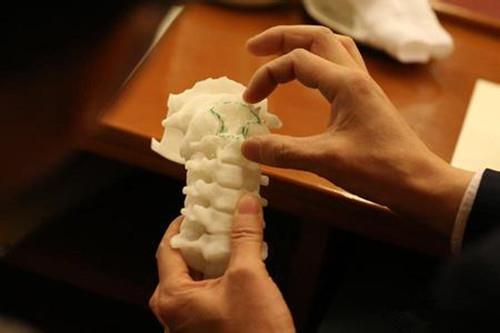Orthopedic surgery has gradually entered the digital age. 3D printing, VR and other well-known technology hotspot technologies are being applied to orthopedic surgery, becoming the doctor's right arm, making orthopedic surgery more precise, greatly reducing the risk and trauma of surgery. From November 26th to 27th, the "SICOT China Digital Orthopaedic Technical Training Center and the Digital Orthopaedic Association Guangdong Provincial Working Committee Inaugural Meeting" jointly sponsored by SICOT China Digital Orthopaedic Science Association and Southern Medical University Shenzhen Hospital was held in Shenzhen. Well-known experts and professors in external orthopedics and related fields have conducted in-depth discussions and exchanges on many hot issues such as 3D printing, robotics and navigation surgery, such as digital orthopedic frontier technology, clinical application and extension research. At the meeting, SICOT China Digital Orthopaedic Technical Training Center also officially settled in Shenzhen. Orthopaedic navigation technology draws the "map" of the surgical area When it comes to 3D printing, many people think of organ printing and transplantation. In fact, the current role of 3D printing in clinical practice is still preoperative diagnosis. Especially for preoperative evaluation and classification of complex fractures, doctors can use 3D printing technology to simulate and reconstruct three-dimensional physical models of various joints and bones with a size of 1:1, providing a realistic simulation environment for preoperative simulation. It makes the degree and type of fracture and the displacement of each fracture block more intuitive, and the diagnosis is more clear, which provides a direct basis for selecting the surgical plan and the anatomical reduction of intraoperative fracture. "Traditional X-ray and CT films only see one face. They cannot visually represent the bone condition. They can only rely on the doctor's experience and spatial imagination. Even 3D reconstruction can only be simulated on a computer." Southern Medical University Professor Sang Hongxun, the leader of the Department of Orthopaedics at the Shenzhen Hospital, said that now that there is 3D printing, the skeleton model of the surgical site needs to be taken on the doctor's hand. It is clear that the operation feels completely different. The shape of human bones is different, coupled with dense muscles, blood vessels, and nerves. The structure is very complicated, especially many complex injuries. With the 3D printed skeletal model, doctors can develop scientific and reasonable individualized surgical plans based on the model, improve the accuracy of the operation, and enable “private customization†of orthopedic surgery. The orthopedic navigation technology uses the three-dimensional imaging technology to scan the surgical area before the operation, and transmits the image data to the image workstation to draw a "map" of the patient's surgical area. With the “mapâ€, you can set the surgical position, and the computer will automatically guide the probe and hand drill connected to it to the “destination†for precise positioning. Plastic Anoscopes,Disposable Anoscope,Disposable Anoscope With Light,Disposable Clear Plastic Anoscopes Henan Anbang Medical Supplies Co., Ltd. , https://www.anbangmedical.com